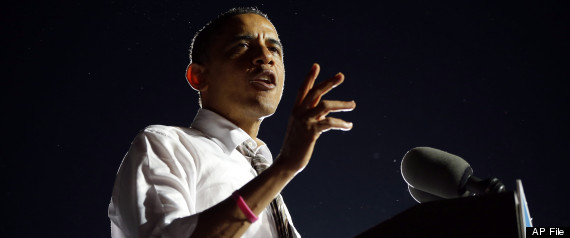Ethnic Origin Reference Guide, 2006 Census
Definitions and explanations of variable concepts
Ethnic origin refers to the ethnic or cultural origins of the respondent's ancestors. An ancestor is someone from whom a person is descended and is usually more distant than a grandparent. In the census, respondents are asked to specify as many ethnic origins as applicable and up to six ethnic origins are retained.Ethnic origin refers to a person's 'roots' and should not be confused with his or her citizenship, nationality, language or place of birth. For example, a person who has Canadian citizenship, speaks Panjabi (Punjabi) and was born in the United States may be of Guyanese ethnic origin. Nevertheless, ethnic origin responses in the census are a reflection of each respondent's perception of their ethnic ancestry, and, consequently, the measurement of ethnicity is affected by changes in the social environment in which the question is asked and changes in the respondent's understanding or views about the topic.
Awareness of family background or length of time since immigration can affect responses to the ethnic origin question as well. Ethnic origin data paint a picture of Canada's multicultural communities. Governments, community groups, ethnic and cultural organizations, school boards, hospitals, and researchers use ethnicity data to assess how people of differing backgrounds have integrated into life in Canada. The Department of Canadian Heritage uses information on ethnic origin to administer programs under the Multiculturalism Act.
Questions
The census has collected data on the ethnic origins of Canadians since 1901, reflecting a long-standing, continuing and widespread demand for information about ethnocultural characteristics of the Canadian population.2006 Census data on ethnic origin were obtained from Question 17 on the 2006 Census Form 2B questionnaire, which was used to enumerate a 20% sample of all private households in Canada. For persons living in private households on Indian reserves, Indian settlements and in remote areas, data were collected using the 2006 Census Form 2D questionnaire.
The 2006 ethnic origin question asked: 'What were the ethnic or cultural origins of this person's ancestors?' A note provided above the question stated that 'The census has collected information on the ancestral origins of the population for over 100 years to capture the composition of Canada's diverse population.' Below the question, a second note indicated that 'An ancestor is usually more distant than a grandparent.'
The 2006 Census 2B ethnic origin question provided 26 examples: 'For example, Canadian, English, French, Chinese, Italian, German, Scottish, East Indian, Irish, Cree, Mi'kmaq (Micmac), Métis, Inuit (Eskimo), Ukrainian, Dutch, Filipino, Polish, Portuguese, Jewish, Greek, Jamaican, Vietnamese, Lebanese, Chilean, Salvadorean, Somali, etc.' On the 2D Census questionnaire, the ethnic origin question was the same as that on the 2B form, although the 2D form provided only 11 examples, starting with Canadian Aboriginal groups. The examples on the 2D form, in order of appearance, were: 'Cree, Ojibway, Mi'kmaq (Micmac), Dene, Blackfoot, Inuit, Métis, Canadian, French, English, German, etc.'
It is not possible to list all the ethnic or cultural origins on the census questionnaires and examples are provided only as a guide as to how to answer the question. The list of examples is based on Statistics Canada's long established methodology. For the most part, the 2B examples are based on the most frequent single origins reported in the 2001 Census and are arranged in order of size as reported in 2001, beginning with the largest group. Examples are also included which represent Canada's Aboriginal peoples (e.g., Cree, Mi'kmaq [Micmac], Métis and Inuit). The last four examples (Lebanese, Chilean, Salvadorean and Somali) are included so that an example is provided for each world region, ensuring that recently arrived groups in Canada, who might not be the most numerous, are also represented in the list of examples.
Additional instructions on how to complete the 2006 ethnic origin question were provided to respondents in the 2006 Census 2B Guide:
- This question refers to the ethnic or cultural origin or origins
of a person's ancestors. An ancestor is someone from whom a person is
descended and is usually more distant than a grandparent. Other than
Aboriginal persons, most people can trace their origins to their
ancestors who first came to this continent. Ancestry should not be
confused with citizenship or nationality.
- For all persons, report the specific ethnic or cultural origin(s) of their ancestors, not the language they spoke. For example, report 'Haitian' rather than 'French', or 'Austrian' rather than 'German.'
- For persons of East Indian or South Asian origin, report a specific origin or origins. Do not report 'Indian.' For example, report 'East Indian from India,' 'East Indian from Guyana,' or indicate the specific group, such as 'Punjabi' or 'Tamil.'
- For persons with Aboriginal ancestors, report a specific origin or origins. For example, report 'Cree,' 'Mi'kmaq,' 'Ojibway,' 'North American Indian,' 'Métis.' Do not report 'Indian.'
Classifications
The 2006 Census includes data for more than 200 ethnic groups reported by people living in Canada. Data are published which show total, single and multiple response counts for each ethnic or cultural group.Tables accessible from the Data section of this document show the specific ethnic origin classifications created in 2006 Census standard and specialized data products. A comparison of ethnic origins collected in the 2006, 2001 and 1996 censuses is also available in Appendix C Comparison of ethnic origins disseminated in 2006, 2001 and 1996, 2006 Census Dictionary.
Ethnicity is a difficult concept to measure and there is no internationally recognized classification for this concept. In general, data for a group is published if the count is about 500 or higher.
A single ethnic origin response occurs when a respondent provides one ethnic origin only. For example, in 2006, about 568,510 people stated that their only ethnic origin was Scottish.
A multiple response occurs when a respondent provides two or more ethnic origins. For example, about 4,151,340 people in 2006 gave a response which included Scottish and one or more other ethnic origins.
Total responses are the sum of single and multiple responses for each ethnic origin. Total response counts indicate the number of persons who reported a specified ethnic origin, either as their only origin or in addition to one or more other ethnic groups. For example, in 2006, about 4,719,850 persons reported at least some Scottish ancestry. The sum of specific groups is not equal to total population due to multiple counts.
Data
Historical Comparability
Over time, there have been differences in the question wording, format, examples and instructions of the ethnic origin question used in the census. The historical comparability of ethnic origin data has thus been affected by these factors, as well as by changes in data processing and the social environment at the time of the census.The 2006 Census ethnic origin question asked 'What were the ethnic or cultural origins of this person's ancestors?' In contrast, in 2001, 1996 and 1991, the question asked 'To which ethnic or cultural group(s) did this person's ancestors belong?' The preamble to the question was also modified slightly for 2006 and a definition of 'ancestor' was placed directly on the questionnaire. Previously, the definition of ancestor had been included only in the census guide. Finally, the list of examples was updated to reflect the frequency of single responses reported in the 2001 Census and 'Salvadorean' was included as an example from Central America.
The format of the 2006 Census ethnic origin question, an open-ended question with four write-in spaces, was the same as that used in the 2001 and 1996 censuses. However, in 2006, the four write-in spaces were structured so that they were each comprised of 11 segmented boxes, rather than each consisting of just one unsegmented line. Nevertheless, although only 11 segmented boxes were indicated on the questionnaire, up to 80 characters were allowed on the database for each of the four write-in spaces. Cases where 80 characters could be received included questionnaires that came from the internet or computer-assisted telephone interviews and questionnaires which required manual key entry because a respondent did not stay within the 11 segmented boxes. As such, while the new limitations on write-in spaces may have encouraged some respondents to write shorter, more abbreviated responses in 2006, or to have used more lines to indicate a multiple response than they used in 2001, it is unlikely that data comparability was significantly affected by the change in format between 2001 and 2006.
Instructions provided alongside the census ethnic origin question have been altered over time to suit the changing collection needs. Since 1986, an instruction to specify as many ethnic groups as applicable has been included in the ethnic origin question.
Prior to the 1981 Census, only the respondent's paternal ancestry was to be reported. If multiple ethnic origins were provided, only one origin was captured, resulting in one ethnic origin per respondent. In 1981, multiple origins were allowed and a write-in space was added to the question, although respondents were not instructed to provide more than one origin. In 1986, respondents were permitted to write in up to three origins other than those shown in the mark-in circles. In 1991, they were permitted to write in up to two additional origins. In 2001 and 1996, four write-in boxes were provided on the questionnaire, and up to six ethnic origins were captured.
Finally, as a result of changing immigration patterns and increasing diversity in Canada, modifications are made to the specific ethnic groups and categories for which data are released each census. In general, the dissemination list for ethnic and cultural origins grows slightly each year. For 2006, the following 18 ethnic origins were released for the first time, having been included under other categories for the 2001 Census and previous censuses: Amhara, Bantu, Chadian, Cornish, Dinka, Gabonese, Gambian, Harari, Manx, Montserratan, Nova Scotian, Ontarian, Peulh, Samoan, Singaporean, Tigrian, Zambian, and Zulu. For the 2006 Census ethnic origin classification and a comparison of ethnic origins released in 2006, 2001, and 1996, please refer to Appendix C Comparison of ethnic origins disseminated in 2006, 2001 and 1996, 2006 Census Dictionary.
Data Quality
Information from the census undergoes data quality verification to ensure that published data are of the highest quality possible. For the ethnic origin variable, this assessment was based on a review of response rates, imputation rates, and a comparison of 2006 counts to those obtained in previous censuses. The overall quality of the ethnic origin variable for the 2006 Census is high.The 2006 non-response rate was 5.5%, compared to 5.6% in 2001. Non-response rates were slightly higher than the national rate in the Atlantic provinces, Quebec, the prairie provinces, and the Yukon Territory, while non-responses rates were lower in Ontario, British Columbia, the Northwest Territories, and Nunavut.
Imputation refers to the process where data quality is improved by verifying the logical consistency of responses and replacing any inconsistent or missing responses with acceptable values. Two types of imputation were applied to the ethnic origin data, namely deterministic imputation and donor imputation. Deterministic imputation is the process by which a unique value is assigned to a missing or invalid response through either relationships among personal characteristics, or, in the case of children with no responses to the ethnic origin question, by using the ethnic origin(s) of their parent(s) to fill in the missing data. Donor imputation is performed by identifying individuals in the same geographical area that have similar, but complete and consistent characteristics and then copying the values of randomly selected individuals to fill in the missing or erroneous data among the 'failed edit' individuals.
In 2006, the total imputation rate from both deterministic imputation and donor imputation was 5.9%. Deterministic imputation was used in slightly less than half of these cases, while donor imputation was used in slightly more than half of them.





